|
|
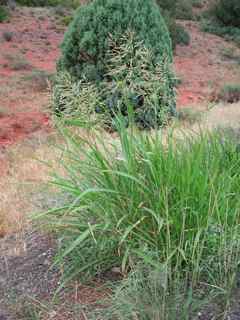 Plant - summer Hwy 179 S. of SedonaMax Licher @http://swbiodiversity.org, Usage Rights: Creative Commons Attribution-ShareAlike (CC BY-SA) | 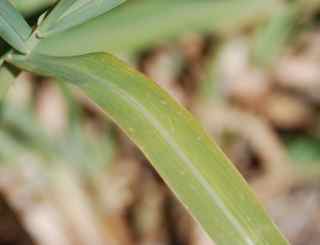 Blades I 17 Sedona exitJohn Kava | 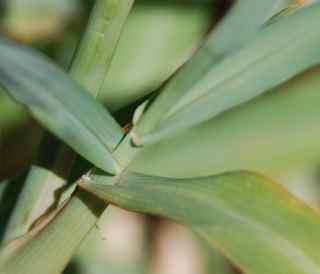 Leaf and collar I 17 Sedona exitJohn Kava | 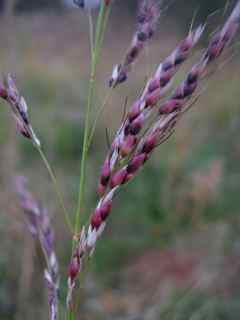 Spikelets Woods CanyonMax Licher @http://swbiodiversity.org, Usage Rights: Creative Commons Attribution-ShareAlike (CC BY-SA) | 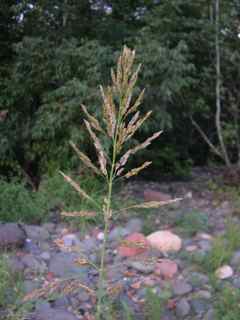 Seedhead - summer Red Rock State ParkMax Licher @http://swbiodiversity.org, Usage Rights: Creative Commons Attribution-ShareAlike (CC BY-SA) | 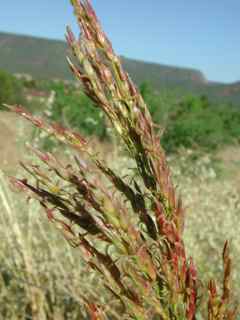 Seedhead - summer Hwy 179 S. of SedonaMax Licher @http://swbiodiversity.org, Usage Rights: Creative Commons Attribution-ShareAlike (CC BY-SA) |
|
| | |
Origin: Introduced Season: Cool and Warm
Habitat Description: Common as a weed in ditches, cultivated fields and wastelands.
Plant Communities:Disturbed Areas
Elevation: Below 5500 feet
Desc:
Large lush green and aggressive sod grass, 3 to 6 feet tall, growing from wide spreading scaly rhizomes. Large open and spreading seedheads.
Identification Notes: Large perennial, stout, scaly rhizomes. Leaves flat with white margins and prominent white midveins. Ligules are hairy. Seedhead is large, densely flowered, reddish. Spikelets paired, one fertile, sessile, awned, one stemmed and sterile. Awn is once-bent.
Grass Type: Perennial bunchgrass Rhizomes: Y Stolons: N
Large Dense Clump (> 2 feet): N Bushy (highly branched): N
Height with Seedheads: Greater than 36 inches
Seedhead Structure: Branched - open and spreading Seedhead Droops: N
Flowering Period: Apr - Nov
Number of Flowers per Spikelet: Multi-flowered Spikelets One-sided: N
Awns: Less than 1/4 inch Three Awns: N Awns Bent: Y
Flower and Seedhead Notes: Branched pyramidal seedhead consisting of 2 to 7 pairs of spikelets. Pairs of spikelets; one sesile and perfect-flowered, fertile and awned, but awn falls off readily; one stemmed, staminate, and not awned. Seeds are conspicuously black or red.
Blade Hairy:
N
Blade with White Margins:
Y
Blade Cross section:
Flat
Blade Notes:
Blades 4 to 32 inches long, up to 1-1/2 inches wide. Large, flat and broad, prominent white mid-rib.
Sheath Hairy:
N
Tuft of Hairs at top of Sheath or Collar:
N
Ligules:
Membranous and hairy
Auricles (Ear-like lobes at collar area:
N
Forage Value:
Moderately palatable and nutritious but may be toxic when prussic acid accumulates.
|
|